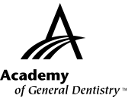|
Exercise No. 389
Subject Code: 017
Dental Materials
The 15 questions for this exercise are based on the article Biocompatibility of a restorative resin-modified glass ionomer cement applied in very deep cavities prepared in human teeth on pages 33-40. This exercise was developed by Kim Capehart, DDS, MBA, PhD(c), in association with the General Dentistry Self-Instruction committee.
|
Reading the article and successfully completing the exercise will enable you to:
- identify the characteristics of resin-modified glass ionomer cements (RMGICs);
- analyze the various studies of RMGICs; and
- recognize the effects of different RMGICs on the pulp.
|

